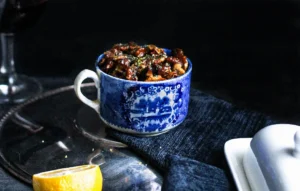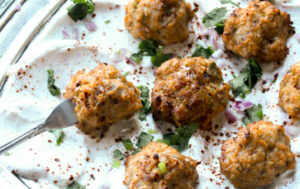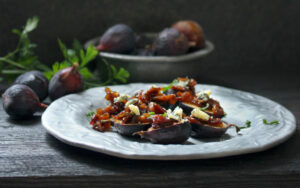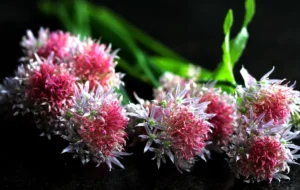Food photography has come a long way since its beginnings in the 19th century. William Henry Fox Talbot and Nicéphore Niépce are considered the first food photographers who pioneered this genre.
Over the years, this niche has evolved from an artistic expression of prosperity and abundance into a powerful culinary storytelling tool. I believe that social media had an especially big impact on this niche, leading us to today.
From juicy meals to sweet desserts, food photography is art, and to create art, you need tools. The camera is the first step, and the lenses are the second, which is where I come into play. In today’s guide, I will discuss the best lenses for food photography and give you a few tips on how to choose a great lens for your needs.
Contents
Essential Features to Consider When Choosing a Lens for Photographing Food
Like with any type of photography, you need to be mindful of several aspects surrounding the lenses.
Focal Length
First and foremost is the focal length, which most food photographers consider. It determines the viewing angle, so depending on what you plan to shoot, you have two options.
Going for the shorter focal length means you’ll have a wider field of view. Lenses like 18 or 24mm are excellent if you want to get as much as possible in your shot. That said, you should expect to see some distortion, especially with the wider options.

On the opposite side of the spectrum, going for lenses with longer focal lengths means you can get close. Lenses like 50mm, 85mm, or those in the triple-digit range, like 105mm or above, are perfect if you want to isolate details. In addition to that, the compression will do wonders and give you a nice and smooth bokeh.
Aperture
The second crucial element in food photography is the aperture. It determines how much light goes through the lens and onto the sensor, but it also influences the depth of field.
Lenses with wide apertures will focus on your dish or a specific element, and thanks to the shallow depth of field, you’ll get a blurred background. In photography, f/1.8 or even f/1.4 are preferred for these kinds of situations, especially if you’re shooting in low-light conditions.

The great thing about these lenses is that you can use them wide open or close. This is especially handy when you need to capture an entire table or dish while keeping the background somewhat blurred.
While prime lenses seem to be the best, it’s not always the case. For example, if you need to capture an entire table, you’d be fine even with a kit lens, as you’ll probably go for a smaller aperture, like f/8 or smaller. I know prime lenses are better, but now I am talking about aperture only.
Lens Coatings
Lens coatings aren’t talked about enough, which I think is a shame. They help improve color vibrancy and reduce glare, something you’ll want to have on your side when you’re shooting food.
Let me simplify that for you. The plates have reflections, and you’ll want the food to be colorful, so do I need to say more?
Factors to Consider When Choosing the Right Lens for Food Photography
Before I start throwing out recommendations for food photography lenses, there are a few factors I need to mention.
While any lens can do the job—I know; I have tried—some are better suited for the job.
With that said, let me break it down so that you have an idea of what to consider.
Type of Photography
A zoom lens, especially one with a fixed aperture of f/2.8, would be ideal for two reasons: flexible focal range and relatively wide aperture. These are excellent choices if you do different types of food photography.

On the other hand, prime lenses are unbeatable, especially if you need a nicely blurred background. They also do much better in low-light conditions, which can be equally essential as versatility.
At the end of the day, it’s a decision you’ll need to make, but there is a caveat I need to make here.
I have done different types of food shots, most of which were with my 18-35mm, and I have no complaints, especially since most of them weren’t in the ideal lighting conditions. With that said, your mileage may vary, so make sure to give this a good thought before deciding.
Your Budget
I can give you a list of the best equipment you need for food photography, but it’s going to cost you a lot. Your budget will play a massive role, so make sure you consider that.
Getting every prime lens in the focal range is ideal, but it’s going to cost you a pretty penny. The zoom lenses can be a good alternative if you’re on a tighter budget, but don’t expect them to be dirt cheap, especially the ones with a fixed f/2.8 aperture.

Capturing the details is best done with macro lenses, which may be a worthwhile investment if your budget allows for it. These lenses are excellent for capturing details but don’t despair if you cannot afford them. A 35mm or 50mm lens at f/1.8 is quite cheap and can help you isolate the details well enough.
Compatibility
Most people say that with an adapter, you can use any lens on your camera, but I wouldn’t completely agree. Sure, it would work, but with plenty of variables, I would recommend keeping compatibility in mind when getting a lens for your food photography journey.
Going for lenses that match your camera’s mount ensures proper compatibility and a fully working combo. Again, I am not hating on adapters, but you may not get a fully working focus, or you’ll need to rely on a manual one. Plus, you’re adding weight and bulk to your camera.
I need to touch base on the crop factor as well. Most photographers will say to get a dedicated lens for the type of camera you have. Crop-sensor cameras should get lenses designed for them, while full-frame ones should get full-frame lenses. While that’s true, I would like to add some clarity to this.

You can combine, but there are a few considerations to be made. When using a full-frame lens on a crop-sensor camera, like I do with a Nikon D7200 and a Sigma 105mm f/2.8, I get no drawbacks. On the other hand, fitting my Sigma 18-35mm f/1.8 on a camera with a full-frame sensor will cause some problems, and vignetting is the most common one. It’s not impossible to shoot with it, but there are some gymnastics involved, so I wouldn’t take this route.
Sustainability
We talk about sustainability a lot these days, and it’s another aspect I want to touch base on. If you’re into this kind of thing, you might want to check which companies have eco-friendly policies. Spoiler alert: almost all of them have, so you probably won’t go wrong whichever you choose.
Refurbished lenses are a great way to save money and reduce potential waste. Yes, they’re not new, but these lenses are properly tested to make sure they operate as intended. This also means you may want to consider getting used lenses for the same reasons. The occasional broken lens may present itself as an opportunity to take the sustainable route and repair it. Saving the planet and saving money—neat, right?
Top Lens Recommendations for Food Photography
Before I start outlining the lenses, I have to mention something. I have two lenses in my backpack that I use to shoot everything, including food photography. They are the Sigma 18-35mm f/1.8 and the Nikkor 35mm f/1.8, with the Sigma being my primary choice. It’s a great lens, and despite the limited focal length, it has served me well for this application.
While having all the lenses on this list is great, you don’t necessarily have to get all of them. Sure, one lens can be limiting, but as long as it covers your needs, you probably won’t need to get new ones.

Whatever you do, just make sure you’re getting quality lenses, as they can make a huge difference in image quality. Some lenses are good at what they do mainly because they allow you to take incredibly sharp images, which is what we’re aiming for.
At a certain point, you may need to get a new lens, which is fine; just make sure it’s one that covers your needs. Whether you need a flexible focal length or a shallow depth of field, you’ll need to do some shopping.
With that out of the way, let me guide you through the overwhelming selection of lenses you can buy. Whether you want to capture details or do some overhead shots, there are countless photography lenses to choose from, which can be overwhelming.
If you’re into food photography but need some help, our food photography prime class by Michelle Lee is here to set the foundation for your delicious journey.
Before we discuss each lens type in detail, the visual below breaks down the best lenses for capturing overhead shots, close-ups, or styled scenes.

Prime Lenses
Prime lenses are my personal favorite for several reasons: they are sharp, clear, and excellent for low-light conditions. This makes them perfect for food photography, where everything is in the details, even if it doesn’t seem that way at first.
From this category, I would go for the nifty fifty or 50mm on a full-frame camera or a 35mm on a crop sensor one. Both will give a similar-looking image due to how optics and sensors work. The focal range is just right for most conditions, even in tight spaces, meaning you can get a full shot or get in closer for some details.

The wide-open aperture does wonders for low-light conditions and, at the same time, helps get that much-desired creamy bokeh. Depending on the lens, you’re probably looking at f/1.8 or f/1.4, with the second one being technically better, especially when shooting in darker conditions.
Zoom Lenses
On the more flexible side, you have zoom lenses, which are what most food photographers use, and with good reason. They’re like having multiple prime lenses in one, so you’re covering a wider range of focal lengths. That said, they do come with a drawback in the form of a not-so-wide aperture, at least not as much as the prime lenses.
I have to pick a lens for this one as well: a 24-70mm f/2.8 on a full-frame camera or a 17-55mm f/2.8 on a crop-sensor body. Like the prime lenses, both options offer a similar field of view, so it doesn’t matter what kind of sensor your camera has.
One thing to note is that if you’re going for the crop sensor option, you may need to search for 17-50mm f/2.8 lenses if you’re a fan of third-party manufacturers. They are 5mm shorter than the Nikon, Canon, or Sony equivalents.

As an alternative, if you’re okay with a smaller aperture but need some extra flexibility, a 24-105mm f/4 is a solid choice if you want to cover a wide focal length. Poorly lit conditions may be a problem, but you’ll have more flexibility than the others.
Zoom lenses are excellent, especially if you’re doing a lot of shoots in restaurants and bars. In these conditions, it’s not always possible to reposition yourself, so you’ll use the lens to do that.
The main thing to note is that you should aim for a zoom lens with a constant aperture. There are zoom lenses with variable apertures, which aren’t ideal. With each movement of the zoom ring, the aperture changes, which you don’t want.

Don’t get me wrong; a kit lens isn’t just for planting causes; you can use it for food photography as well, but you may find that it won’t do as good a job as you think. At the end of the day, try, practice, and see if it works for you.
Macro Lenses
To get in on the action and capture the fine details of a dish, you’ll need to consider macro photography. Some might argue that a zoom lens could do a good enough job, but in reality, the 1:1 magnification ratio you get with most macro lenses means you’ll have a unique perspective.
A macro shot in food photography means you’ll want to capture a specific detail, which you could do with a lens that has a long focal length, but the perspective won’t be what you would like it to be. These are different lenses from the others I mentioned, so I wouldn’t skip on them, especially if you’re after the details.
Unlike the previous types, where I gave you one or two options, it’s a bit difficult to do that with these. For both full-frame and crop sensor cameras, you have macro lenses ranging from 30mm to 200mm. Yes, Nikon has a 200mm macro lens. This raises the question: Which one to choose?

I would go for something in-between, and I think that a lens around the 100mm range should be a nice balance. For me, that’s the Sigma 105mm F/2.8. If you want a lens specific to a crop sensor, you can get something like the Tamron 60mm f/2.
Tilt-Shift Lenses
If you want to control the focus plane and perspective when shooting food, you should consider using a tilt-shift lens. These are excellent if you want to have multiple elements shart while getting a nice blurred background. This kind of lens is convenient for angled or overhead shots. As a bonus, they correct the distortion, so you won’t have to deal with that in post-processing.
Like with the macro lenses, you have plenty of choices, so I will go with a middle-ground option. The Nikon PC-E 45mm f/2.8 or the Canon TS-E 50mm f/2.8 are excellent options that offer a focal range that should be flexible enough and do a good job for most kinds of shootings.
Conclusion
Food photography, like any other type of photography, is art, and you are the artist. Creativity plays a massive role, but that doesn’t mean you should ignore the equipment. The camera body is crucial, but the lenses are also an essential part, and knowing your needs can help you make better choices.
Having the best food photography lenses in your backpack is nice, but that doesn’t mean you should avoid everything else. In this niche, it’s important to practice and step outside of your comfort zone if you want to learn and improve.
With so many options outlined, how do you choose the best photography lenses for food? If you’re just starting out, I recommend your first lens be flexible. It will allow you to try out different things and learn how to improve yourself.
At the end of the day, as long as you have an idea in your mind, it’s just a matter of finding a way to turn it into a great shot.
Take Away
The first step toward your journey in the world of food photography starts with understanding the basics, which will help you decide which lens is the best. Focal length, aperture, features, budget, type of photography, and more are part of this decision, so it’s essential not to rush it. Even though the number of available options may seem overwhelming, my tips should guide you on the right path, allowing you to make the right choice and become a better food photographer.









